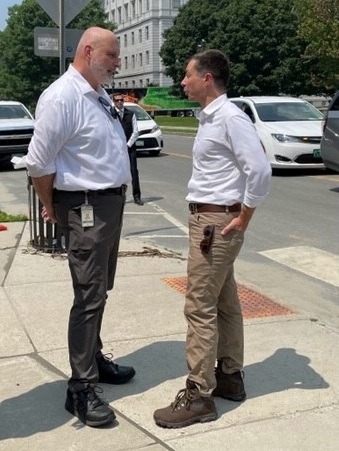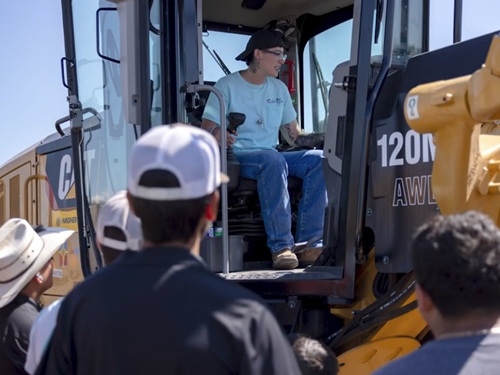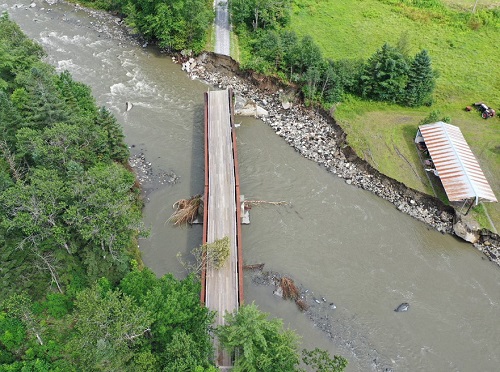The Federal Highway Administration recently issued $10 million in “quick release” Emergency Relief or ER funds for use as a down payment by the Vermont Agency of Transportation – known as VTrans – to help offset costs to repair infrastructure damaged by statewide flooding that occurred in July.
[Above photo by VTrans]
Pete Buttigieg, secretary of the U.S. Department of Transportation, and FHWA Administrator Shailen Bhatt recently joined Vermont Governor Phil Scott (R), VTrans representatives, and other state officials to assess the damage to roads, bridges and other critical infrastructure, and offer federal support to help Vermont recover from the storms.
Catastrophic flash and river flooding hit much of Vermont starting on July 7 and continued for weeks – creating washouts of numerous roads and bridges while also triggering land and mudslides that resulted in significant property losses.

[Editor’s note: Several states in the Northeast and in the Mid-Atlantic region were hit by similar flooding and related issues due to heavy rainfall that swept the region in mid to late July.]
The most widespread and significant flood damage occurred as a result of prolonged heavy rainfall between July 10 and 11, when rainfall amounts of three to nine inches were observed across the state over 48 hours, FHWA noted in a statement.
On July 11, President Biden approved an emergency declaration for Vermont, which authorized the Stafford Disaster Relief and Emergency Assistance Act to save lives, protect property, public health and safety and to lessen or avert the threat of a catastrophe in the state.
“This historic rainfall and flooding have caused catastrophic damage to infrastructure across the state, and destroyed homes and businesses,” noted Gov. Scott in a statement at the time.

“Securing and rebuilding roads and critical infrastructure needs to happen quickly to keep Vermonters safe,” he said. “To move as quickly as this response requires, we need to pause certain requirements and waive specific restrictions that can delay this important work.”
The FHWA’s ER funding will be used to support clearing mud and rockslides from the roadway; opening plugged culverts; repairing culverts and eroded shoulders; clearing material deposited by floodwaters onto structures; making repairs to damaged roadways and structures; and repairing and replacing guardrails.
“Our crews have been working tirelessly to repair the damaged state roads and bridges, and to restore the state’s transportation infrastructure for Vermonters and visitors to our state,” said VTrans Secretary Joe Flynn in a statement at the time.
“The agency’s focus in recent years on resiliency planning and implementing lessons learned from Tropical Storm Irene has enabled us to work on recovery efforts more effectively, wisely, and quickly than ever before,” he added.
 Nation
Nation
Kansas DOT Profiled in State DOT 2-Minute Update
October 24, 2025 Nation
Nation

